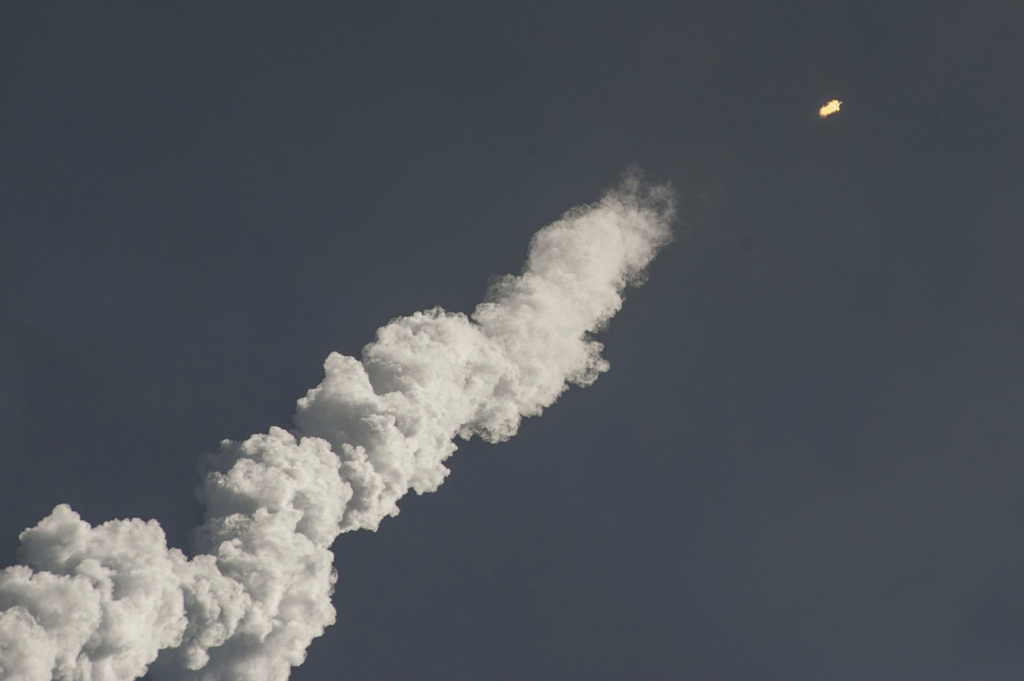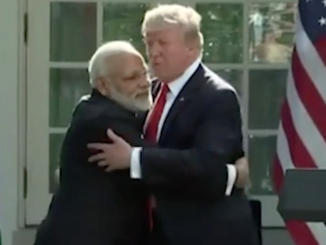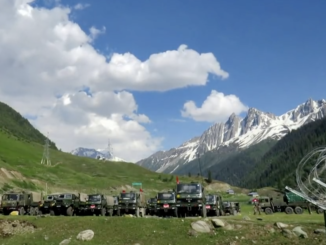
With the recent successful testing of scramjet-powered ‘Hypersonic Technology Demonstrator Vehicle’ (HSTDV) by India, alarming notions for the strategic stability environment of South Asian region have been raised by many folds. Under Prime Minister Narendra Modi’s government, India has paved new paths to recreate its fascist Hindu legacy, both regionally and internationally along with its military supremacy. It has indeed posed a grave threat to the economic, geographic, and military fronts of various states within South Asia, including Pakistan, Nepal, and Afghanistan. Such notorious ambitions of becoming a regional dictator has created an insecurity paradox, especially for Pakistan which has been India’s target for the past 7 decades.
Scramjet is the upgraded version of ramjet engine, that utilizes oxygen which is required for the missile combustion not from the tank onboard but instead from the atmosphere passing through the engine itself which in return makes it much faster in speed, and smaller and lighter in size. On 7th September 2020, India conducted its first-ever HSTDV Supersonic Combustion Ramjet from Dr. Abdul Kalam Launch Complex at the Wheeler Island, on the coast of Odisha. According to the Defence Research and Development Organization (DRDO), HSTDV is purely an indigenous project. Under the Integrated Guided Missile Development Programme (IGMDP) India has been in the continuous process of manufacturing a wide range of cruise and ballistic missiles, including Prithvi, Agni, and anti-tanks. However, prior to the recent HSTDV test, India was already in collaboration with Russia for developing BrahMos-2 hypersonic cruise missile under the Russian NPO Mashinostroyenia and Indian Defence Research and Development Organization. If it is developed, it will be recognized as the world’s fastest cruise missile leading to multiple regional consequences.
According to the DRDO test details, the HSTDV successfully sustained its scramjet flight at the speed of Mach 6 (a velocity six times the speed of sound) at an altitude of 30 kilometres with the help of a solid-propellant rocket motor of an Agni ballistic missile. After the auto-ignition phase, it maintained its flight path for 20-24 seconds which itself is remarkable for flight testing. On the success of the flight, DRDO chairman Dr. G Satheesh Reddy stated, “It’s a major technological breakthrough. The air-breathing scramjet engine was successfully flight-tested at hypersonic speed within the atmosphere, meeting all technological parameters. The test paves the way for the development of many more critical technologies, materials, and hypersonic vehicles.”
The recent breakthrough has enabled India to join the ‘Elite Hypersonic Regime/Club’ along with major global powers, notably the US, China, and Russia (though India still has a long way to go in mastering this technology). The reasons why major powers are in pursuit of developing hypersonic cruise missiles are: a) to enhance future military capabilities, and b) hypersonic missiles and weapons are specifically aimed at increasing the survivability against modern ballistic missile defence system which gives them an extremely good edge over conventional missiles and superiority for the military targets.
The Missile Defence Advocacy Alliance (MDAA) states, “Hypersonic weapons incorporate the speed of ballistic missile with the manoeuvring capabilities of a cruise missile. Hypersonic weapons refer to the weapons that travel faster than Mach 5 (~3,800mph) and have the capability to manoeuvre during the entire flight.”
Whereas, the Pentagon says, “While the designed speed of the hypersonic missile is faster than that of the sound, its advantages lie in its enhanced manoeuvrability and smooth flight path, which is much harder to track than that of traditional missiles”.
Characteristics such as enhanced manoeuvrability, hypersonic speed (greater than Mach 5), and unlikely detection during the entire flight time makes hypersonic vehicle much more effective and efficient to be used against adversaries in both offensive and defensive domains. According to various reports, the US is developing and testing the hypersonic missiles primarily to deliver the conventional payload whereas Russia and China are pursuing it for carrying both conventional and nuclear warheads.
Repercussions for Pakistan. India has evoked serious security threats for the entire region, specifically for Pakistan, by joining the hypersonic club as it will enhance India’s ballistic missile capabilities. This will enable Indian military to launch ‘hit-to-kill’ missiles targeting crucial bases within Pakistan’s territory with sharp precision and accurate navigation. India is planning to utilize this technology to create more hypersonic missiles in the next 5 years, which will lead to the realization that it can be used against Pakistan in case of any future war/conflict between two nuclear powers, considering not only the historical rivalry between the rival states but also the current situation in Kashmir and RSS attacks against the Muslim majority in India. If such an incident occurs, it will become difficult for Pakistan to launch an efficient counterattack as fast as its opponent, due to the hypersonic speed of the missiles.
Pakistan has to adapt with this new development made by its rival neighbour, which is ultimately threatening its homeland security. It has to develop hypersonic glide vehicles as soon as possible to maintain an arms race balance, which is crucial for security aspects.
Although Pakistan currently operates one subsonic wind tunnel test facility in Risalpur, it will have to establish various other wind tunnels for testing the aerodynamics of the hypersonic glide vehicles. It needs to develop scramjet/ramjet propulsion systems for which the federal government requires new budget allocations and manufacturing plants. Pakistan’s scientific community must come up with new models of hypersonic glide vehicles, it’s a time taking process to develop new technology but in the long run it will be considered beneficial to maintain an equilibrium with India in terms of weapons and to counter security threats posed by India’s enhanced weapon capabilities, not only to the regional strategic environment but specifically to Pakistan’s security.




Be the first to comment